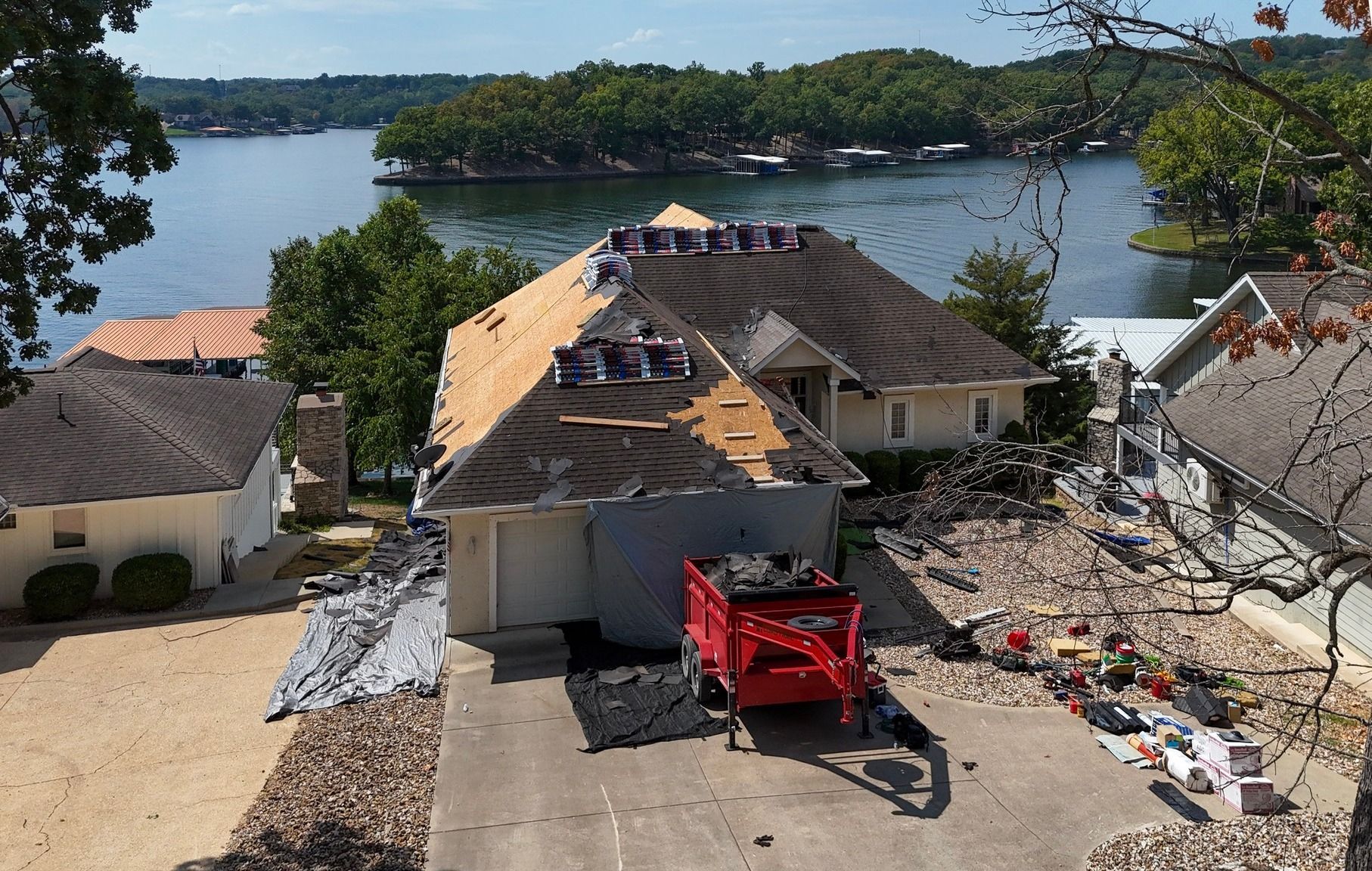Why Siding Maintenance Is the Secret to Long-Lasting Curb Appeal

Table of Contents
- The Role of Siding in Your Home Exterior
- Why Regular Siding Maintenance Matters
- How to Keep Your Siding Looking Its Best
- Signs You Need Siding Repair or Replacement
- The Long-Term Value of Investing in Your Home Exterior
- Final Thoughts
Key Takeaways
- Regular siding maintenance preserves your home’s beauty and structural integrity.
- Simple care routines like cleaning and inspections can prevent costly siding repair.
- Addressing early warning signs extends the lifespan of your home exterior.
- Professional maintenance ensures long-term curb appeal and energy efficiency.
The Role of Siding in Your Home Exterior
Your home exterior is the first thing people notice—it’s the face of your home. But beyond looks, siding serves as your property’s protective shell, shielding it from rain, wind, sun, and temperature changes. When it’s properly maintained, siding not only enhances curb appeal but also contributes to your home’s energy efficiency and overall longevity. Learn more about how to protect your home through storm-proofing your home with durable siding.
Every material—from vinyl to fiber cement—requires care to stay in top shape. Neglecting siding maintenance can lead to fading, warping, or moisture damage that impacts both appearance and performance. By understanding its vital role, homeowners can appreciate why upkeep isn’t optional—it’s essential.
Why Regular Siding Maintenance Matters
Keeping your siding in good condition is like maintaining the foundation of your home’s beauty. Proper siding maintenance prevents small issues from escalating into expensive siding repair projects. Over time, exposure to the elements causes dirt buildup, fading, and even cracks. Routine care safeguards against these effects, allowing your home exterior to age gracefully.
Protection from the Elements
Rain, UV rays, and humidity can take a toll on your siding. Without consistent cleaning and inspection, these natural factors can weaken the material. Moisture intrusion, in particular, is a silent threat—it can lead to mold growth or structural decay beneath the panels.
Improved Energy Efficiency
Well-maintained siding also helps regulate your home’s internal temperature. Cracks, gaps, or warped boards can let air escape, forcing your HVAC system to work harder. Proper sealing and upkeep create a more energy-efficient home while reducing utility costs.
Preserving Aesthetic Value
Curb appeal isn’t just about fresh paint or landscaping. Clean, damage-free siding brings the whole home exterior together. When potential buyers or guests see a well-kept home, it immediately signals care, quality, and pride of ownership.
How to Keep Your Siding Looking Its Best
The good news is that siding maintenance doesn’t have to be complicated. With a few simple habits, you can keep your siding in pristine condition year-round.
- Regular Cleaning
Dirt, mildew, and pollen can accumulate on your siding and dull its finish. Use a garden hose and a soft brush with a mild detergent to wash your siding at least once or twice a year. Avoid harsh chemicals or high-pressure washing, as they may damage the material or finish.
For vinyl siding, a gentle rinse works wonders. For fiber cement or wood, be mindful of water absorption and use appropriate cleaners to prevent deterioration. - Seasonal Inspections
Inspect your home exterior every spring and fall for cracks, warping, or loose panels. Seasonal checks are particularly important after severe weather. Catching small problems early can prevent major siding repair later. - Repainting or Resealing
Paint acts as a protective barrier for wood and certain composite sidings. If you notice peeling or fading, a fresh coat of paint or sealant can extend the lifespan of your siding. Choose high-quality exterior paint that can resist UV rays and moisture. - Trim Nearby Vegetation
Overgrown trees or shrubs can scratch or stain your siding. Keep branches trimmed at least a few feet away from the surface to minimize contact and airflow obstruction. - Address Minor Repairs Promptly
Don’t wait until a small crack becomes a big problem. Quick fixes like replacing a warped plank or sealing a minor gap can prevent water infiltration and costly structural damage later.
Signs You Need Siding Repair or Replacement
Even with diligent siding maintenance, materials eventually show signs of aging. Recognizing when it’s time for siding repair—or even a full replacement—can save you money and protect your home exterior.
Visible Damage or Cracks
Hairline fractures, warping, or holes are clear signs that your siding is deteriorating. These imperfections not only affect curb appeal but also allow moisture to penetrate your home exterior.
Fading or Discoloration
Sun exposure naturally causes fading over time. However, if the color looks uneven or dull despite cleaning, it may indicate that the protective coating has worn off. This can lead to faster degradation of the material beneath.
Rising Energy Bills
Unexpected increases in energy costs can hint at compromised siding. Gaps or loose panels let air escape, forcing your heating and cooling system to compensate. Repairing or replacing damaged sections can restore your home’s insulation and comfort.
Rot or Mold Growth
If you notice a musty smell, bubbling paint, or soft spots, moisture may be trapped behind your siding. Mold and rot are serious problems that often require professional siding repair to prevent further damage.
Frequent Maintenance
When you find yourself making constant small repairs or repainting too often, it might be time for an upgrade. Modern siding materials offer better durability and longer warranties, reducing long-term maintenance needs.
The Long-Term Value of Investing in Your Home Exterior
Think of siding maintenance as a long-term investment rather than an expense. A well-maintained home exterior enhances property value, provides lasting protection, and keeps your home looking vibrant for decades.
Boosting Curb Appeal and Home Value
According to real estate professionals, homes with updated or well-maintained siding often sell faster and for higher prices. Potential buyers see it as one less renovation to worry about. Even if you’re not planning to sell soon, consistent upkeep preserves your home’s equity.
Avoiding Costly Repairs
Neglecting maintenance can lead to severe problems like water damage, mold, or pest intrusion—all of which are far more expensive to fix than regular cleaning or inspections. Spending a little time and effort on routine care now means saving thousands later.
Longevity and Peace of Mind
Siding is one of the most durable components of your home exterior, but it requires attention to stay that way. Knowing your home is protected from weather damage and deterioration brings peace of mind and confidence in its lasting beauty.
Final Thoughts
Your siding is more than just a visual element—it’s a protective and aesthetic investment that shapes your home’s first impression. With consistent siding maintenance, you safeguard your home against the elements, reduce repair costs, and keep your property looking beautiful year-round.
Whether your home needs a quick siding repair, professional inspection, or a full exterior update, expert help ensures lasting results. For dependable siding care and installation services, trust the professionals who understand what your home exterior needs to stay strong and stylish.
Contact Select Exteriors and Roofing today to schedule an inspection or learn more about our comprehensive siding services.
Visit
https://www.select-exteriors.com/, call
(573) 303-5000, or email
info@select-exteriors.com to get started on your next project.
Frequently Asked Questions
Why is siding maintenance important for our home exterior?
We believe siding maintenance is essential because it protects our home exterior from moisture, sun damage, and wear. By keeping our siding clean and well-sealed, we prevent costly repairs and maintain our home’s curb appeal and energy efficiency year-round.
How often should we perform siding maintenance?
We recommend inspecting and cleaning our siding at least twice a year—once in spring and once in fall. Regular siding maintenance helps us spot early signs of damage and schedule siding repair before small issues turn into bigger problems.
What are common signs we need siding repair?
We know it’s time for siding repair when we see cracks, warping, fading, or mold on our home exterior. Rising energy bills or visible water damage are also key indicators that our siding needs professional attention.
Can proper siding maintenance really improve energy efficiency?
Yes, it can! When we keep our siding in great shape—sealing gaps and repairing damage—it prevents air leaks and improves insulation. This means our home exterior stays comfortable, and we spend less on heating and cooling.
When should we consider replacing our siding instead of repairing it?
If we find ourselves doing frequent siding repair or notice extensive damage, it’s often more practical to replace it. New siding materials not only reduce future maintenance but also boost our home exterior’s durability and appearance.



